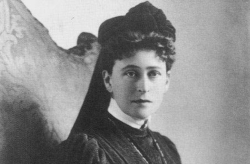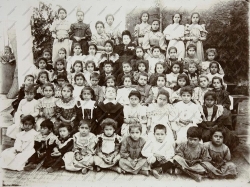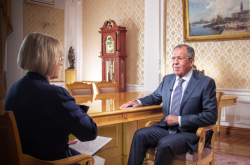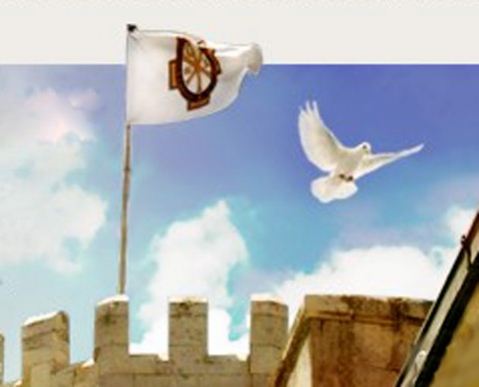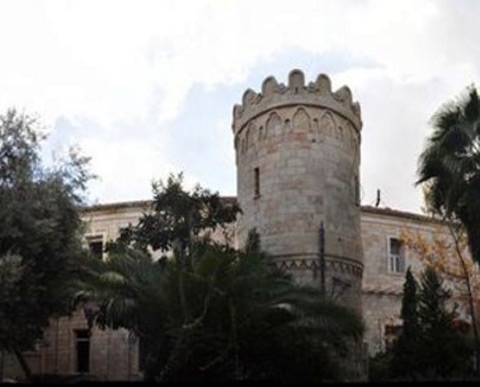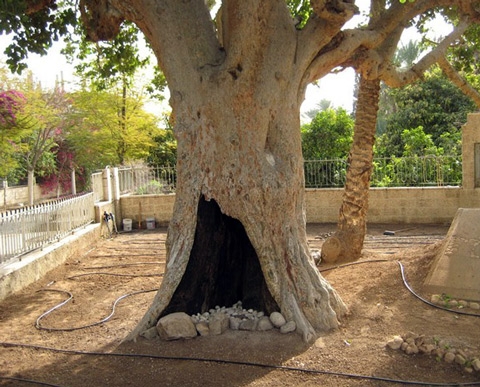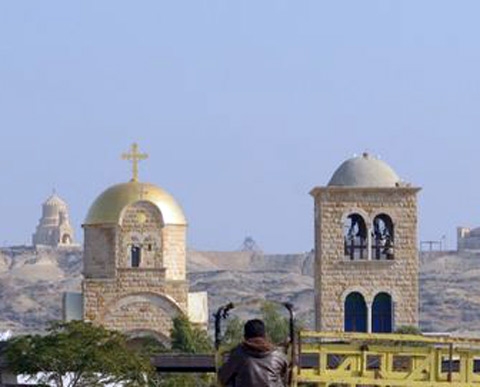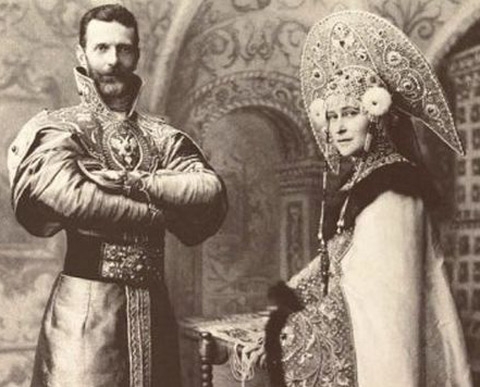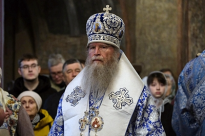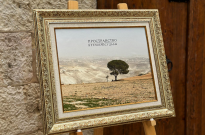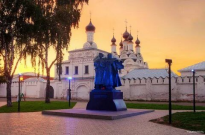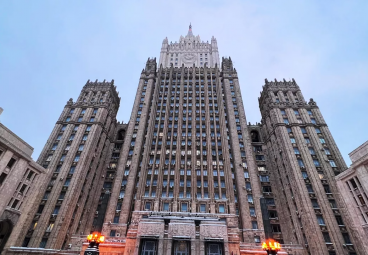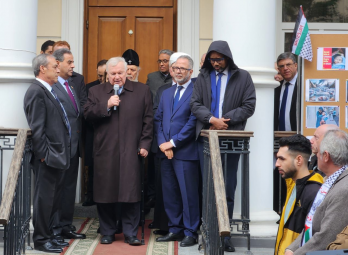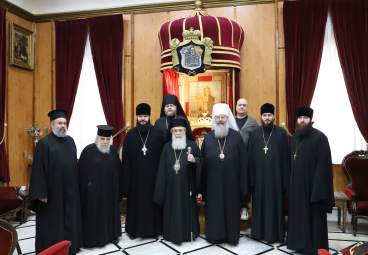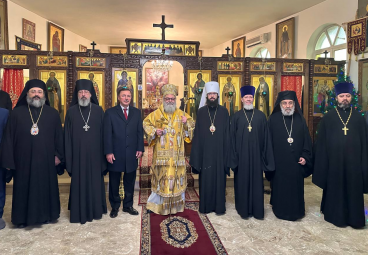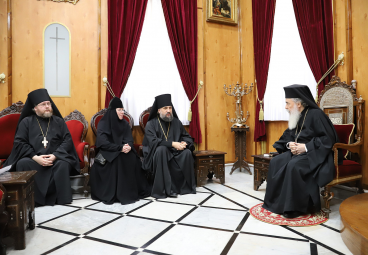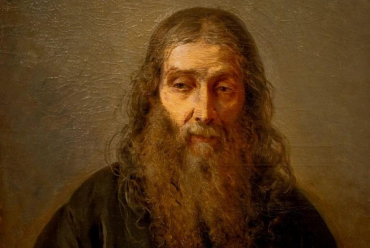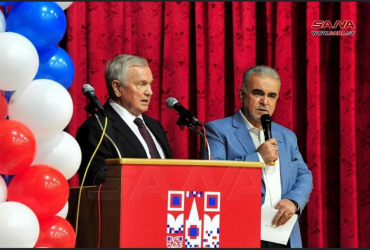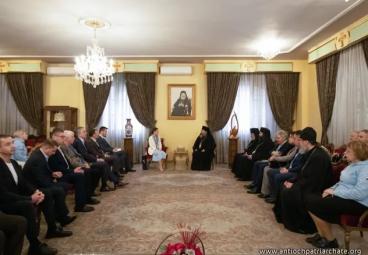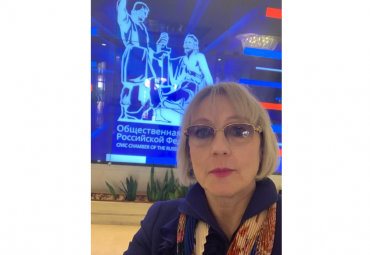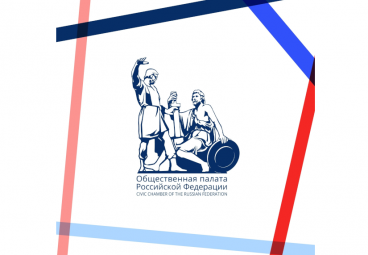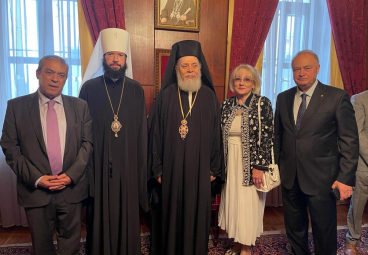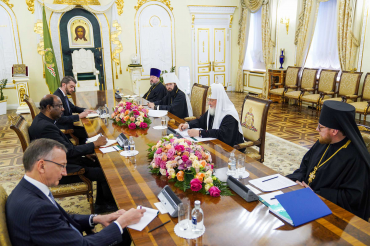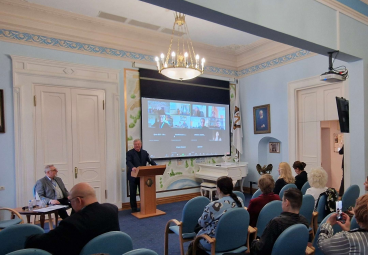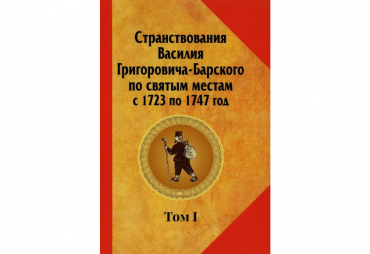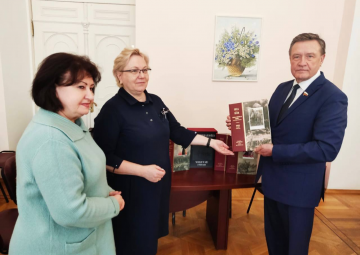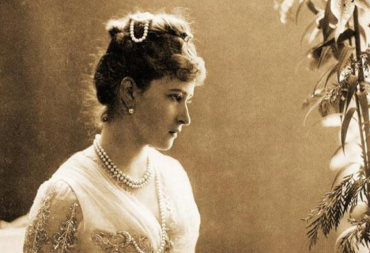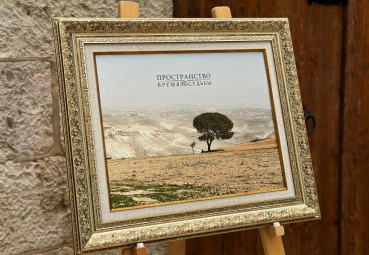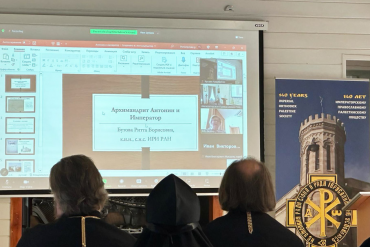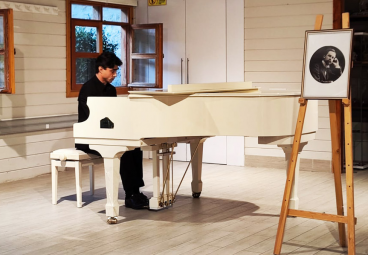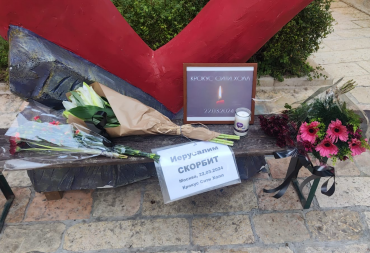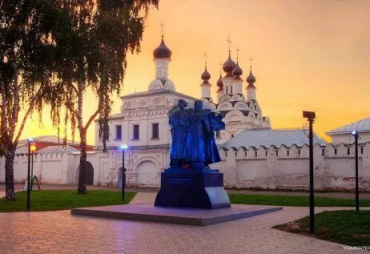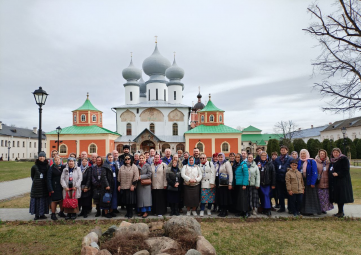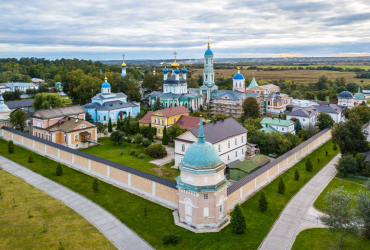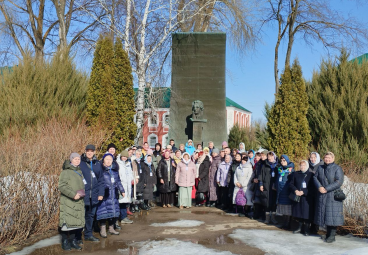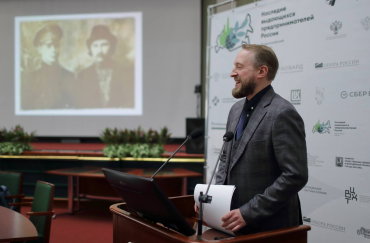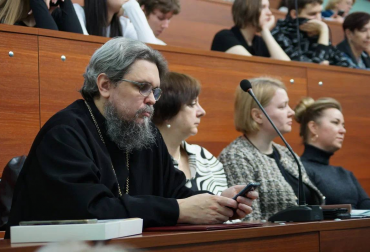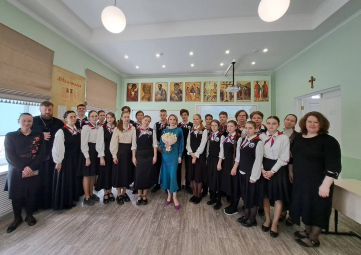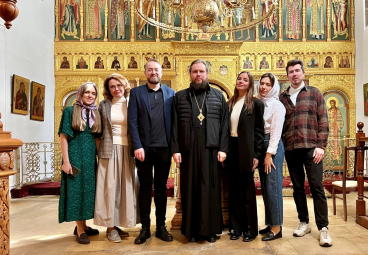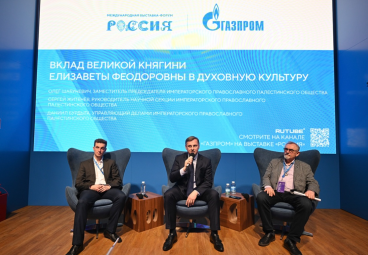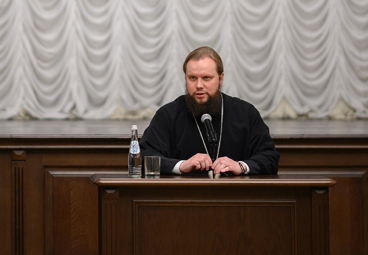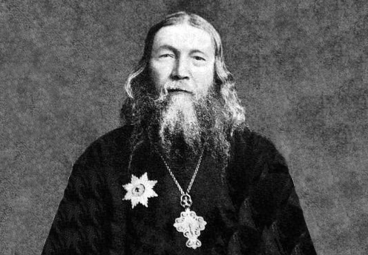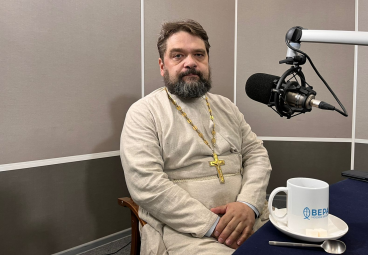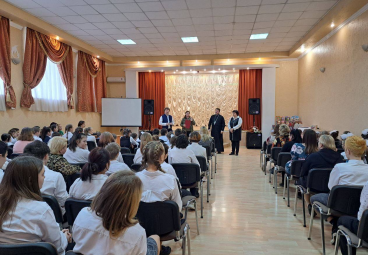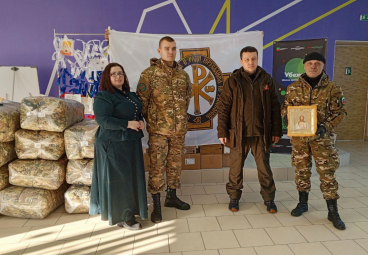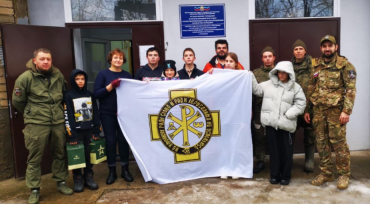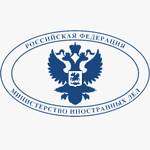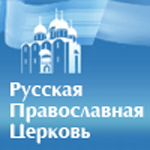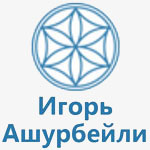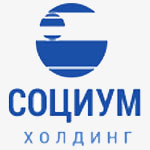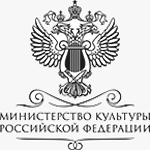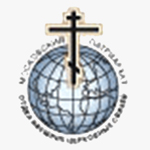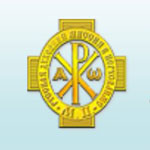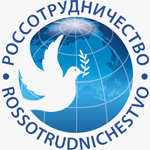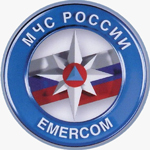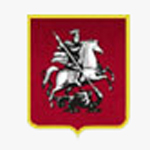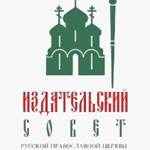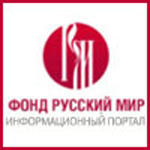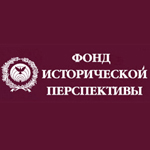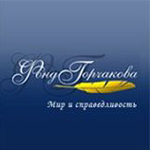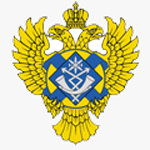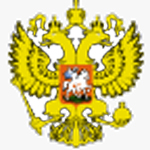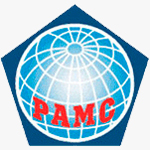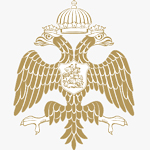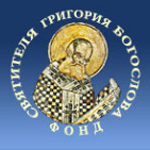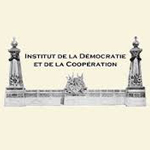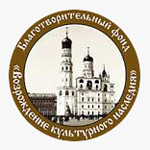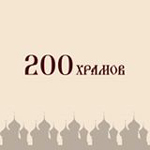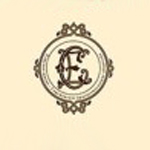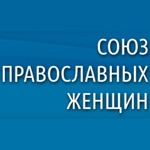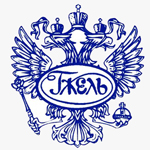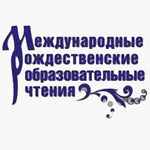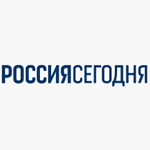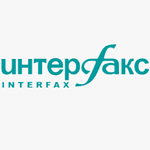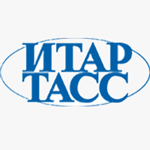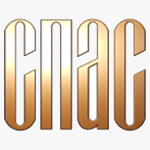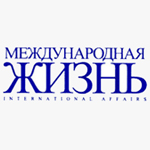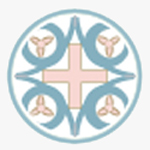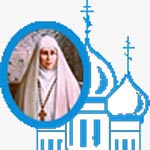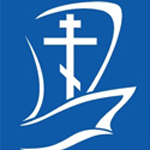History of a leave from the Codex Sinaiticus in the collection of the Society of Lovers of Ancient Literature. E. A. Borisovets
The primary purpose of the Society was "to publish Old Russian manuscripts remarkable in literary, scientific, artistic terms or in terms of everyday life, and re-print rare books"1.
In his memoirs, Pavel Vyazemsky's contemporary, the noted historian and scholar of Byzantine culture Krisanf Loparev wrote that in 1888, Count Sergei Sheremetevwas elected Chairman of the Society, and Ivan Pomialovsky became a secretary. And "even under the management of Prince Vyazemsky, the Society, actually, was ranked rather high by scientists, now when its moving spirit is Ivan Pomialovsky, who attracted Byzantine literature to serve as the necessary foundation for the study of Old Russian texts, Western Europe also turned its attention to 34, Fontanka Embankment"2.
In 1891 the post of Secretary went to Loparev, who worked on the description of the collection of manuscripts in the Society of Lovers of Ancient Literature for several years3. The specific leave from the celebrated Codex Sinaiticus was first mentioned exactly in this description. Loparev notes that a person, who has brought the parchment sheet to the Society, wished to remain anonymous. The catalogue of manuscripts, in which the fragment was first listed, was published in 1899. Therefore, this piece of the Codex Sinaiticus had been entered the Society before this time. Information on the transfer of the fragment and the name of the owner is omitted in archival documents. "It is known that a portion of new acquisitions were offered for purchase to the Society by various antique dealers, among them the first place belonged to the late Shibanov, who frequently visited the Society and exchanged his acquisitions for duplicate publications"4. It is quite possible that this fragment of the Codex Sinaiticus was obtained just from him.
Members of the Society included historians, specialists in the study of early texts, paleographers, scholars of Byzantine history, musicologists, specialists in literature and languages. Therefore, scientific contacts with various institutions and individuals as well as the range of investigations in the Society were quite diversified. N.P. Kondakov, I.V. Pomyalovsky, K.M. Loparev, A.A. Dmitriyevsky, V.N. Beneshevich explored Greek manuscripts . Researches by S.V. Smolensky and A.V. Preobrazhensky during the expedition to Mount Athos undertaken on behalf of the Society in 1906 were devoted to studying and copying Greek notated manuscripts. Numerous trevels of Russian scientists in Greece, Sinai and Palestine enriched the domestic libraries with valuable photographs and rare examples of Greek manuscripts. Thanks to his expeditions to Mount Athos in 1886, 1887-88, 1889, 1893, 1903 and 1910, A.A. Dmitriyevsky compiled three volumes containing descriptions of liturgical manuscripts held in the libraries of Orthodox Orient5. The specialist in source study and archaeographer K.M. Loparev has done much in this field. In 1880, following his teacher V. Vasilevsky, whose name is associated with the establishment and development of the historical discipline of Byzantine studies in Russia, he went in for the source study and classification of monuments of Byzantine hagiography6. In 1896, Loparev visited the libraries of Mount Athos in order to investigate the Greek and Slavic lists of Lives of Saints. In addition, as a member of staff of the Imperial Public Library (now the National Library of Russia), Loparev compiled a description of the library's manuscripts, and described comprehensively 624 manuscripts in the Museum of the Orthodox Palestine Society in 1887-1889.
At the turn of the 19th-20th centuries, some of the above mentioned scientists took an active part in the work of the Imperial Orthodox Palestine Society, among them were A.A. Dmitriyevsky, F.I. Uspensky, V.N. Beneshevich, N.P. Kondakov - the founder of a new section in Archeology and Art History. The Society has received several Greek manuscripts as a gift from Kondakov.
During his trevels in Europe and the Middle East, V.N. Beneshevich, as an expert in Byzantine canon law and experienced paleographer, took photographs of a great number of manuscripts, mostly containing texts on canon law of unique importance to the history of the national science7. He also published the catalogue of Greek manuscripts in St Catherine's Monastery on Mt Sinai, based on materials of Bishop Porfiry (Uspensky)8. Thanks to this catalogue, researchers became aware of the existence of another sheet of Codex Sinaiticus in the collection of the Society of Lovers of Ancient Literature.
The Archive of the Society preserves documents containing correspondence on the subject of copying fragment in order to reproduced it in the second volume of a facsimile of the Codex Sinaiticus prepared by Professor Kirsoff Lake. The first request was made in 1914 through President of Harvard University Abbott Lawrence Lowell, with the aid of Councilor of the American Embassy Charles S. Wilson. This negotiations took place in several stages because it was actually difficult to make a copy of a parchment sheet bearing hardly visible text. The delay was caused by the desire of the photographer Karl Bulla to obtain the most satisfactory results in his photographs. Photocopies were sent on 7 September 19169. And on 25 October 1916, the Society of Lovers of Ancient Literature received a letter from the Ministry of Foreign Affairs, expressing sincere appreciation for the photographs required to Professor Lake.
Thus, the leaf from the collection of the Society of Lovers of Ancient Literature proved to be of particular significance to the completeness of the content of the publication of the Codex Sinaiticus. The second volume, which included the reproduction of a fragment from the collection of the Society, was released in 1922.10
E. A. Borisovets,
Staff Scientist of the Old Russian Manuscripts Section
1 — Charter of the Society of Lovers of Ancient Literature. Saint Petersburg, 1877.
2 — Annual Report of the Society of Lovers of Ancient Literature for the year 1877. Saint Petersburg, 1878. P. 22.
3 — K.M. Loparev. Description of the Manuscripts in the Society of Lovers of Ancient Literature. Part I. Manuscripts in folio (F.I-F.190). 1892; Part II. Manuscripts in quarto (Q I-Q 258). Saint Petersburg 1893; Part III. Manuscripts in octavo (O.I-O.176). Saint Petersburg, 1899. (The Society of Lovers of Ancient Literature, Publications).
4 — Colection in Commemoration of Prince Pavel Pyotrovich Vyazemsky. Saint Petersburg 1902. P. 6-7.
5 — A.A. Dmitriyevsky. Descriptions of Liturgical Manuscripts Held in the Libraries of Orthodox Orient. Vol. 1. Part 1 (typikon). Kiev, 1895; vol. 2 (euchologion). Kiev, 1901; vol. 3, 1st half (typikons, part 2). Petrograd, 1917.
6 — См.: L.M. Zalivalova K.M. Loparev: the scholar and his hand-written legacy //Archives of Russian Scholars of Byzantine History in Saint Petersburg. Saint Petersburg, 1995. P. 213.
7 — См.: L. A. Gerd. Photograph Archive of V.N. Beneshevich // Russian Byzantine Studies. Results and Prospects. Proceedings of the international conference, dedicated to 100 years of the Vizantiiskii vremennik (Byzantine Annals) and 100 years of the Russian Archaeological Institute in Constantinople. (Saint Petersburg. 24 - 26 May 1994). Moscow, 1994. P. 36.
8 — Catalogue Codicum Vss. Graec. Qui... in Monte Sina asservantur. Tom I Petrop. 1911. Р. 639-642.
9 — These photographs have been also preserved in the records of the Society of Lovers of Ancient Literature: Item number 60. Pp. 9, 10, 11.
10 — Codex Sinaiticus Petropolitanus et Friderico Augustanus Lipsiensis: The Old Testament preserved in The Public Library of Petrograd… now reproduced in facsimile from photographs / by Helen and Kirsoff Lake; with a description and introduction to the history of the codex by Kirsoff Lake. Oxford, 1922.

